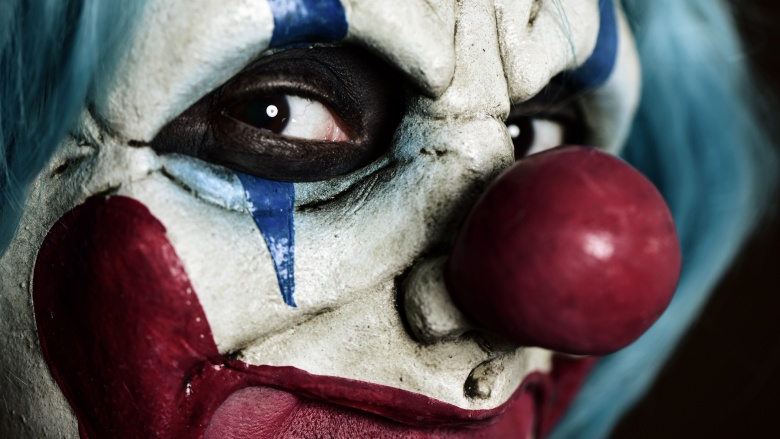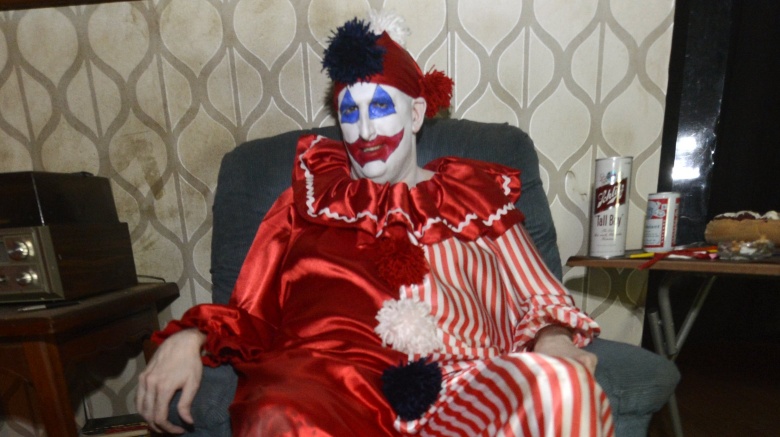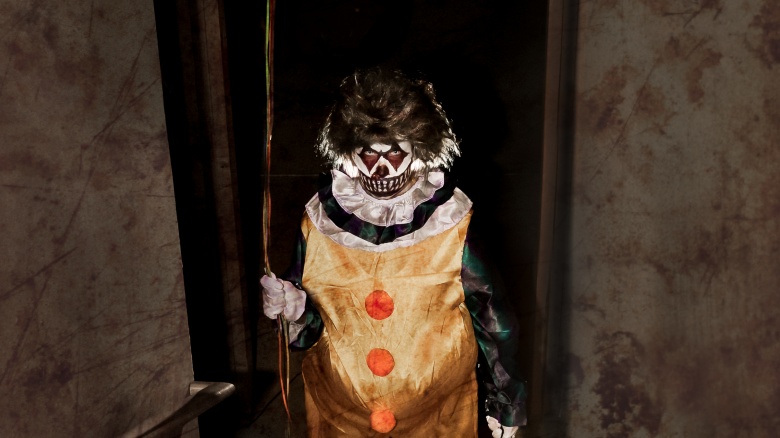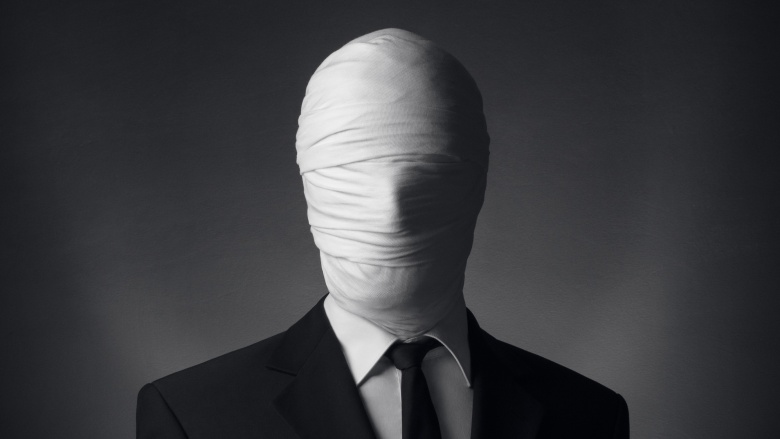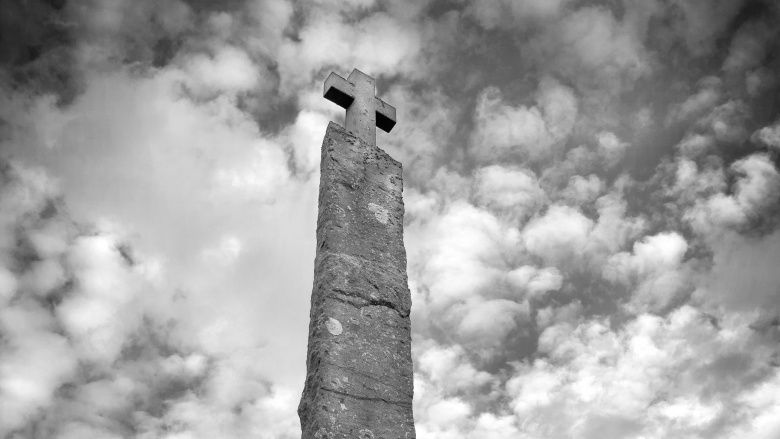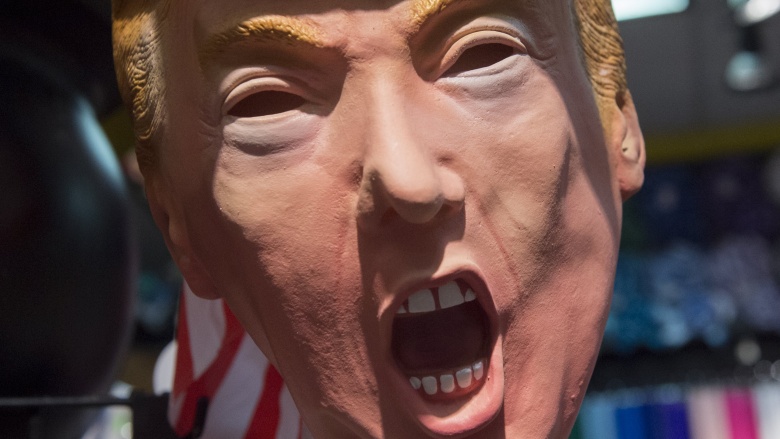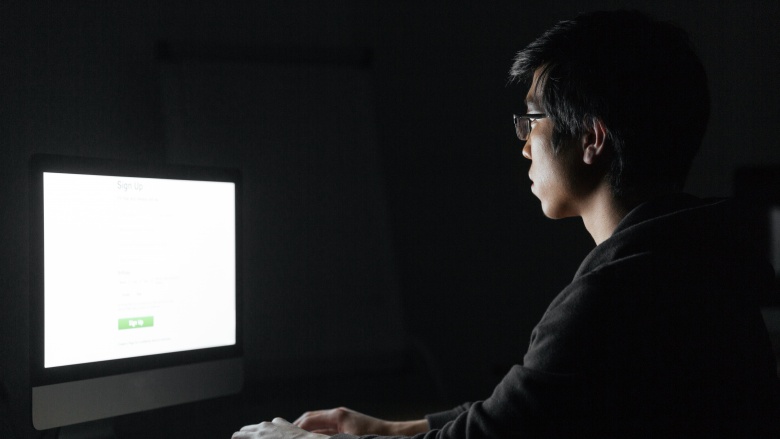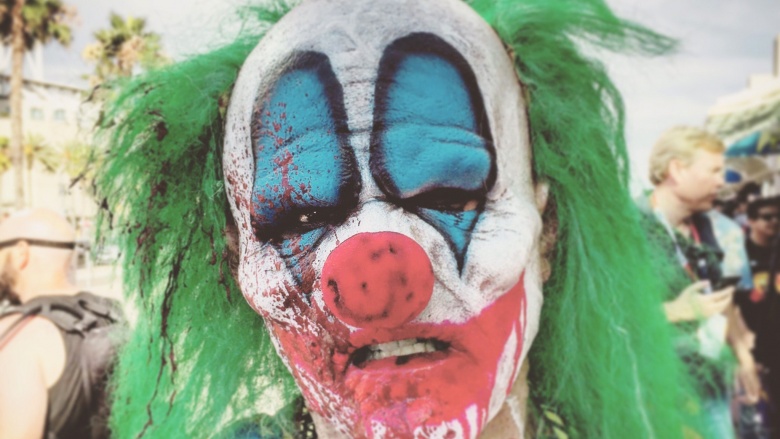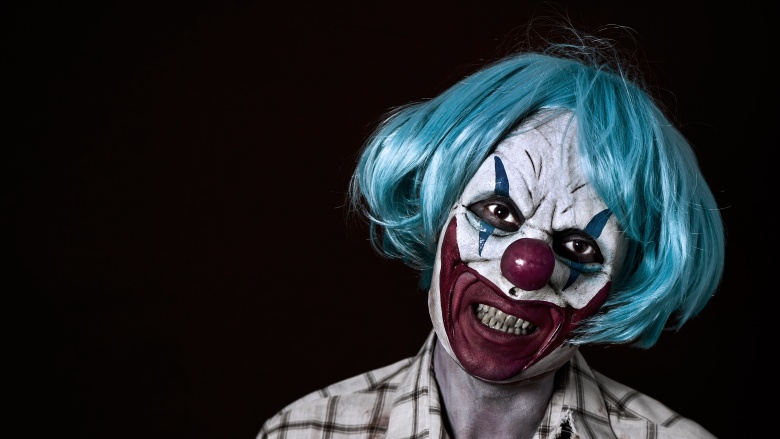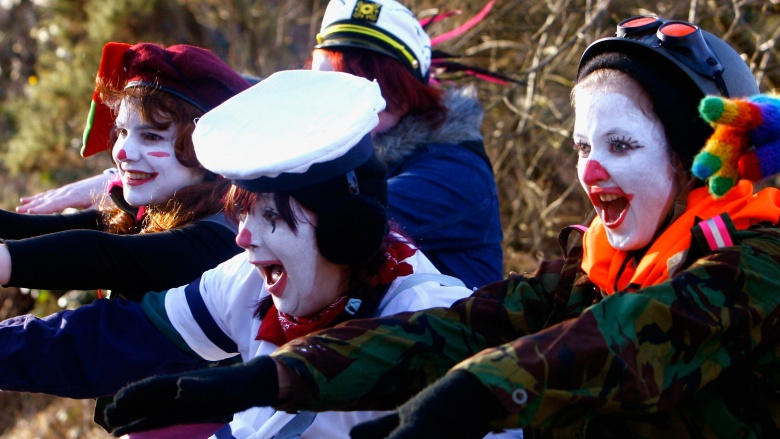The Real Reasons Clowns Are Popping Up Everywhere
As if 2016 couldn't get any weirder, the country is now gripped with a creepy clown pandemic. Schools are shutting down, parents are keeping their kids home, and clowns are attacked in the street. It's a weird situation. Here are some real reasons why it's happening.
We've always been terrified of clowns
The trope of the evil clown has been around for a very long time, dating back to the 19th century where horror writers would occasionally use the trope in their work. One of the most famous examples of an evil clown story was Edgar Allen Poe's short story "Hop-Frog." Another is a clown character, based on a popular actor at the time, in Charles Dickens' The Pickwick Papers.
The idea of an evil clown hits people deep for a variety of reasons. First, of all, they are usually seen interacting with children. Parents automatically feels a little uneasy when strange people interact with their kids. Second, the clowns sit right in uncanny valley, a psychological idea that states humans are automatically repulsed by creatures that look almost human but fall just short of human form. With their white makeup and distorted faces, clowns trigger our brain to respond with initial skepticism and outright repulsion. In our time, clowns are so feared that researchers identify it as a phobia. Even children dislike clowns. The University of Sheffield found that of 250 children polled in a study about the decor in a hospital, all of them hated clown decorations. So our culture has prepared us for the clown epidemic for centuries. Our brains are set up to find them distrustful, and it sure doesn't help that Western culture has had its fair share of evil clown stories since the 19th century.
John Wayne Gacy Jr.
For years, the trope of an evil clown lay dormant, mostly regulated to horror enthusiasts. That changed in the 1970s. Anybody who was alive in the '70s (or who is a Sufjan Stevens fan) knows of John Wayne Gacy Jr., a serial killer active from 1972 to 1978. Papers later called Gacy the "Killer Clown" because he would dress as a clown and go to charities and fundraisers in his non-murdering time. Before the police caught Gacy, he killed at least 33 teenage boys and young men. Since publicity surrounding Gacy made sure to mention his clown activities (it made for a good headline), he made most people in the '70s at least slightly nervous around clowns. A few years later, Stephen King terrified his readers with It, showcasing Pennywise, another killer clown. Those who originally heard the Gacy story have children and grandchildren who go to school in areas affected by the clown scare. Certainly, memories of Gacy and Pennywise will surface when they hear about "killer clowns."
They are copycats of a 2013 case
Of all the creepy things that a person can do, dressing as a clown to scare people is a low-risk, high-reward situation. According to folklorist Benjamin Radford, all the cases during this epidemic so far have been stunts, with none resulting in physical harm or disappearances. Radford explains that a photography project featuring a clown in England in 2013 may have sparked this wave. Copycat incidents soon occurred in France and New York, leading to more publicity for stalker clowns. Once people heard about those cases, they started doing their own copycat stalkings. Fast-forward three years and now we are experiencing the clown epidemic because of copycats following after copycats. Radford insists that none of these sightings are caused by actual unhinged clowns, just goofballs trying to ride the wave.
Psychologically, acting like a clown stalker is something that some human brains can enjoy. Creepy clown pranksters can watch themselves on the news and chuckle to themselves about causing a mass panic. It is the perfect psychological cocktail for the somewhat-mischievous to indulge in.
Social media has created widespread hoaxes
From that, Twitter and Instagram users started using their videos to make miniature horror movies, capitalizing on the new fear. The key is that none of these videos were real. Anybody can report a clown incident, and few will fact-check them. Some of them were even creative hoaxes. At least one video of creepy clowns (above) ended up being a viral marketing stunt for a haunted house in Ohio. Some have suggested that the sightings might be a clever advertising campaign for Rob Zombie's recently released killer clown film, 31. Following that logic, the remake of It comes out sometime in 2017. Maybe some advertising executive dreamed up this stunt to get killer clowns more in the public mind than they normally would be. If this is true, we are witnessing a new and unprecedented marketing strategy, creating a moral panic without ever explicitly advertising for the movie.
Some people may view it as an alternate reality game
Slender Man is a supernatural killer in a creepypasta that became extremely popular, leading to creepypasta enthusiasts creating their own alternate reality around chasing down Slender Man and pretending to interact with him. Unfortunately, this led to violent incidents. Perhaps the creepy clown panic is similar to Slender Man. Just like Slender Man fans would play alternate reality games of their own making, the creepy clown panic might be a group of enthusiasts playing what is essentially a big, live-action role-playing game. The difference would be that, this time, national media caught on quickly and created a story around it. Slender Man did not become as popular or widely known after being connected to the 2014 attempted murder.
Maybe creepy clowns are the new Slender Man, and the players are laughing their heads off. Even if it started out as a joke, viewing clown hunting as an alternate reality activity is not popular. In Connecticut, a school district organized a mass "clown hunt" that blurred the line between fact and fiction. They did it with a tongue-in-cheek tone, but the potential for confusion is clear.
It's a modern-day witch hunt
Clowns are an old fear. Our brains are literally wired to find them odd, repulsive, and dangerous. Because we are already predisposed to hate clowns, this panic has only increased our vendetta against them. According to sociologist Dustin Kidd, the reason the clown reports are everywhere is because we are experiencing a modern-day witch hunt.
Back in the Puritan era, witch hunts occurred when communities became so frightened of imaginary evils that they began to kill people they suspected of being witches. Of course, the victims of the witch hunts were usually outsiders who didn't fit the typical mold. They became easy victims of hatred because people disliked them or wanted them dead anyway; they just needed a reason. For most of us, having fewer clowns in our lives would be a welcome change, so our brains easily accept the idea of evil clowns, just like the Puritans easily accepted the idea of witches. Essentially, we are projecting our subconscious fears into the world and letting our biases convince us that we need to fight an enemy that does not exist.
Panic can be caused by social uncertainty
Mass panic can easily ensue during uncertain times, and these are uncertain times in the U.S. With the presidential elections coming up, citizens feel scared and tired, especially with the amount of negative media they have seen about both presidential candidates. It's possible that people freaking out over the clown reports would have ignored them in other circumstances.
More conspiracy-minded folks on sites like Reddit have pointed out the odd timing of the creepy clown panic. Just as the U.S. is a month away from the presidential elections, many have become distracted by creepy clowns. While some conspiracy theorists assume that it is a case of the government distracting us, a more obvious explanation is that people are so sick of worrying about the elections that they're happy to be distracted — 59 percent of Americans surveyed are sick of hearing about elections, and 81 percent of Americans in one survey said they fear one or both of the candidates. They will turn to anything to distract them, including the creepy clowns. On a good day, the clowns have an aura of mystery and folklore. Worrying about clowns feels better than worrying about our government leaders. While presidential candidates are very real, we subconsciously realize that the clowns are most likely a hoax, so spending time thinking about them beats worrying about clear and present political dangers.
It could be a creepy psychology experiment
But conspiracy theorists might be right. When reading the news stories about the clowns, it is interesting that there have been no cases of people actually dying from encounters with clowns. How is everybody freaking out over nothing? One theory is that somebody is tinkering with our social media.
In 2014, Facebook conducted an interesting (and unsettling) study. Over the course of a few weeks, Facebook algorithms manipulated the timelines of over half a million members, changing the tone of the content they saw. Some people had negative content front and center on their feeds; others had positive content. The Facebook researchers tried to find out how users reacted after seeing a certain tone of content for a few weeks. Unsurprisingly, users subjected to negative content were more irritable and easily frightened in their responses to posts. Could this be a new social media experiment on a larger scale?
Phantom clown theory
There is a scientific theory on the topic of clown fears and mass hysteria that explains our current predicament. Loren Coleman, a cyptozoologist who studies urban legends related to creepy creatures, recently published a book where he described the phantom clown theory. According to Coleman, this type of mass hysteria occurs when a creepy person or creature starts interacting with children. When our children report danger and parents do not experience what their kids do, adults become easily frightened. Adults are supposed to act rational in the face of danger, but we are just as afraid of the unknown as our kids.
Believing that danger is close by but not being able to see it can drive even the most level-headed adult nuts, especially when their kids are threatened. This ties in with a known fact about these clown sightings. According to The Guardian, the first clown sighting of this latest craze was by a little boy in South Carolina. He told his mother that a clown was trying to get him to go into the woods. Nobody else in the apartment complex saw the clown, but residents of other complexes nearby made similar claims in the following days. The stories spread organically, and we are always afraid of things we cannot see.
This is a natural outcome of stranger-danger panic
In seemingly every decade, the U.S. goes through a moral panic. In the '80s, parents thought that Dungeons & Dragons was an evil and Satanic game and tried to ban it. The fear of Satanic rituals carried over into the '90s. People are always looking for something to ostracize and fear. But instead of choosing real dangers, concerned citizens like to choose fake evils to fight. Just looking at this election season, we can see how people of all political stripes create fake boogeymen to scare people over to their side. Often, the fear is imaginary, not corresponding to any real danger.
According to Benjamin Radford, the killer clown panic is a natural outcome of teaching kids to fear strangers. He points out that the paranoid focus on stranger danger was mostly founded on suspicion and fear, rather than logical facts and statistics. Kids were never really that threatened by strangers. (Abductions and other crimes against children are more commonly committed by someone who already knows the child.)
Clowns are the ultimate stranger. They look human, but are also weird and distant from us. Even worse, they're meant to entertain children. Parents and kids who were raised to distrust anybody who seemed unusual are now facing exactly what they were warned to run away from. And that is frightening. Combining stranger-danger moral panic with folkloric elements has created a situation that, while not unique, has gripped the nation. Fortunately, Radford thinks the epidemic will not survive into November.
Clandestine Insurgent Rebel Clown Army
With all this talk of government conspiracies, psychological biases, and social media hoaxes, the one possibility that no one wants to consider is that there might actually be organized creepy clowns terrorizing our country. They could be working together. In fact, the creepy clown sightings could come from a group known as the Clandestine Insurgent Rebel Clown Army.
CIRCA is a left-wing organization that specializes in nonviolent political actions while dressed in clown costumes. They oppose war and support left-wing ideologies. CIRCA is mostly active in Europe, where they held many protests and demonstrations during George W. Bush's tenure. According to their manifesto, CIRCA will always demonstrate against war-mongering and right-wing authoritarianism wherever they see it. While CIRCA has not been explicitly linked to the creepy clown sightings, there are some interesting connections. First, the clown sightings have not resulted in any direct violence by the clowns. Secondly, they are mainly occurring in conservative states. Third, right-wing politics are on the rise around the world. With Brexit and the Trump candidacy, the forces CIRCA opposes are making serious headway. Perhaps CIRCA is getting involved in protests or setting up chapters of their movement to start nonviolent protests.
At the end of the day, it doesn't really matter. Just let it be over soon.

